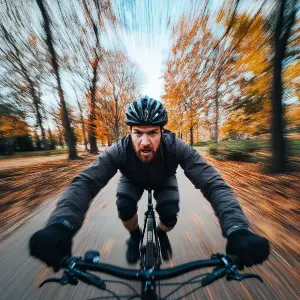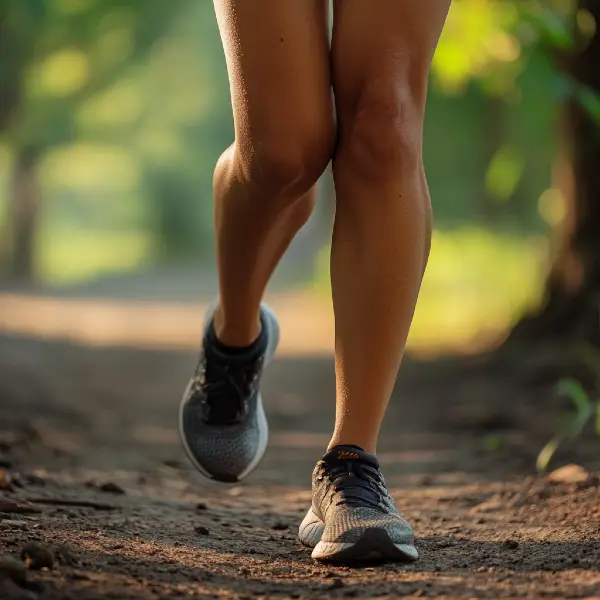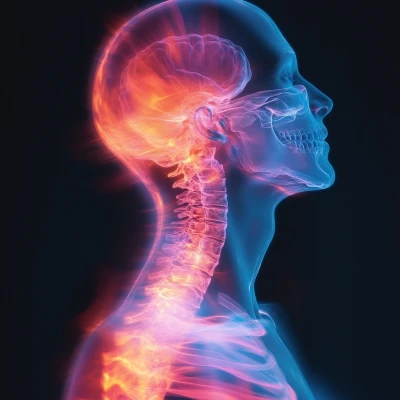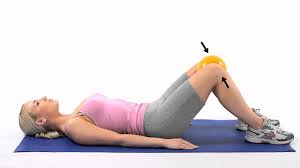Achilles Tendinosis in Runners: How a Toronto Chiropractor Can Help

Achilles tendinosis is a chronic condition affecting the Achilles tendon, the thick band of tissue connecting your calf muscles to your heel bone. Previously referred to as Achilles tendinitis, this condition is now understood to be primarily degenerative rather than inflammatory. Tendinosis involves the breakdown of collagen fibers within the tendon, leading to symptoms like pain, stiffness, and reduced performance.
What is Achilles Tendinosis?
Achilles tendinosis refers to the chronic degeneration of the Achilles tendon, the thick band of tissue connecting the calf muscles (gastrocnemius and soleus) to the heel bone (calcaneus). Over time, repetitive stress can lead to microscopic tears in the tendon, resulting in structural changes and pain.
Achilles Tendinosis is characterized by:
- Collagen fiber disorganization.
- Reduced tendon strength and elasticity.
- Minimal inflammation.
Symptoms of Achilles Tendinosis
- Gradual Onset of Pain: Pain typically develops slowly and is often felt as a dull ache or stiffness in the back of the heel.
- Morning Stiffness: The tendon may feel stiff upon waking, improving with light activity.
- Pain During or After Running: Pain often worsens during prolonged or intense runs.
- Thickened Tendon: The affected area may feel thicker or nodular due to tendon degeneration.
- Decreased Performance: Reduced strength and push-off power in the affected leg.
Causes of Achilles Tendinosis in Runners: A Detailed Look
Achilles tendinosis is primarily caused by repetitive stress and improper recovery. Below is an in-depth analysis of the major contributing factors:
1. Overuse and Repetitive Stress
Running is a high-impact activity that places significant strain on the Achilles tendon, particularly during the push-off phase of each stride. Over time, repetitive loading without adequate rest can lead to microtears in the tendon, which, if not repaired, accumulate and cause degeneration.
- Running Surfaces: Hard surfaces, such as concrete or asphalt, increase the impact force transmitted to the Achilles tendon, exacerbating strain.
- Inclines and Hills: Uphill running demands greater engagement of the calf muscles, which increases the load on the Achilles tendon.
2. Sudden Increases in Training Load
The Achilles tendon adapts to stress gradually. However, a rapid uptick in mileage, speed, or hill work can overwhelm its capacity to adapt, leading to microtears and eventual degeneration.
- Examples:
- Jumping from running 20 km per week to 40 km.
- Introducing intense speedwork or hill sprints without proper buildup.
- Risk: The sudden load can exceed its tolerance without giving the tendon time to strengthen.
3. Poor Biomechanics
Faulty biomechanics can place uneven stress on the Achilles tendon, making it more prone to injury.
- Overpronation (Flat Feet): Causes the foot to roll inward excessively, increasing the strain on the Achilles tendon’s medial (inner) side.
- Supination (High Arches): Reduces the foot’s ability to absorb shock, transferring more impact force directly to the tendon.
- Weak Calf Muscles: If the calf muscles lack strength or endurance, the Achilles tendon bears a disproportionate amount of the load during running.
- Poor Running Form:
- Excessive forward lean or heel striking can increase stress on the tendon.
- Tight hip flexors or weak glutes may also shift more load onto the lower leg.
4. Inadequate Recovery
Recovery is crucial for tendon health, allowing microtears to heal and the tendon to adapt to increased stress. Without proper rest, the cumulative damage outpaces repair, leading to degeneration.
- Inadequate Rest Days: Runners who train daily without rest are at higher risk.
- Poor Sleep and Nutrition: Both impair the body’s ability to repair tissues, including tendons.
- Ignoring Early Warning Signs: Continuing to train through mild pain or stiffness can worsen tendon damage.
5. Improper Footwear
The shoe runners wear play a significant role in preventing or contributing to Achilles tendinosis.
- Worn-Out Shoes: Shoes lose their cushioning and support over time, failing to absorb shock and adequately support the foot.
- Inadequate Arch Support:
- Flat-footed runners need shoes with good arch support to prevent overpronation.
- High-arched runners need shoes with extra cushioning to absorb shock.
- Heel Drop: Shoes with a very low heel-to-toe drop increase the load on the Achilles tendon by forcing it to stretch more during each stride.
- Ill-Fitting Shoes: Tight or improperly sized shoes can alter gait mechanics, increasing strain on the tendon.
Additional Risk Factors in Runners
- Age: Tendons naturally lose elasticity and strength as people age, making older runners more susceptible.
- Previous Injuries: A history of Achilles tendon injuries or other lower limb issues increases the risk of tendinosis.
- Running Intensity: High-intensity training such as interval runs or sprints increases the tendon’s workload significantly.
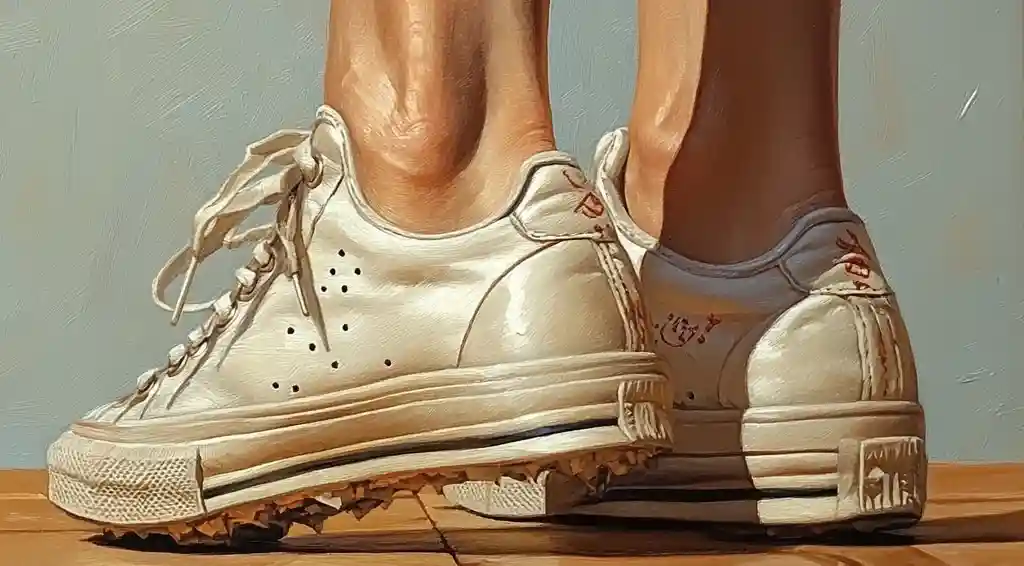
Which Runners Are Most Affected?
Certain types of runners are more susceptible to Achilles tendinosis:
- High-Mileage Runners: Those who frequently run long distances.
- Hill Runners: Uphill running places extra stress on the Achilles tendon.
- Speed-Focused Runners: Those who emphasize sprinting or interval training.
- Older Runners: Tendons lose elasticity with age, increasing the risk of degeneration.
- Runners with Biomechanical Issues: Flat feet, high arches, or improper gait can increase tendon stress.
Treatment Options for Achilles Tendinosis
1. Rest and Activity Modification
- Reduce or temporarily stop running to allow the tendon to recover.
- Cross-training with low-impact activities like swimming or cycling can maintain fitness without stressing the tendon.
2. Eccentric Strengthening Exercises
- Exercises such as eccentric calf raises are crucial for rebuilding tendon strength and promoting collagen repair.
- Perform these exercises daily, gradually increasing intensity.
3. Orthotics
- Custom or Off-the-Shelf Orthotics: Provide better arch support and correct biomechanical imbalances.
- Heel Lifts: Reduce the strain on the Achilles tendon by slightly elevating the heel.
4. Manual Therapy
- Active Release Techniques (ART) and Graston Technique: Break down adhesions and scar tissue in the tendon.
- Massage Therapy: Reduces muscle tightness and improves circulation.
5. Shockwave Therapy
- Stimulates tendon healing by increasing blood flow and promoting tissue regeneration.
6. Stretching and Mobility Work
- Stretch the calf muscles and Achilles tendon to improve flexibility and reduce stiffness.
7. Footwear Adjustments
- Replace worn-out shoes and choose running shoes with proper support and cushioning.
- Use shoes designed for your specific foot type (neutral, stability, or motion control).
8. Anti-Inflammatory Measures (If Pain is Severe)
- While inflammation is not the primary issue, ice and NSAIDs may help manage pain in the short term.
Preventing Achilles Tendinosis in Runners
- Gradual Training Progression: Increase mileage and intensity slowly to avoid overloading the tendon.
- Strength Training: Incorporate calf and lower leg strengthening exercises into your routine.
- Stretching: Maintain flexibility in the calves and Achilles tendon.
- Proper Footwear: Replace running shoes every 300-500 miles and ensure they suit your foot type.
- Regular Biomechanical Assessments: Periodically evaluate your running form and gait.
Conclusion
Achilles tendinosis is a common yet manageable condition in runners. Early recognition and intervention are key to recovery and preventing further degeneration. Treatment options, including orthotics, eccentric exercises, and manual therapy, can effectively restore tendon health and get runners back on track. By understanding the risks and implementing preventive strategies, runners can reduce their likelihood of developing Achilles tendinosis and maintain optimal performance.


